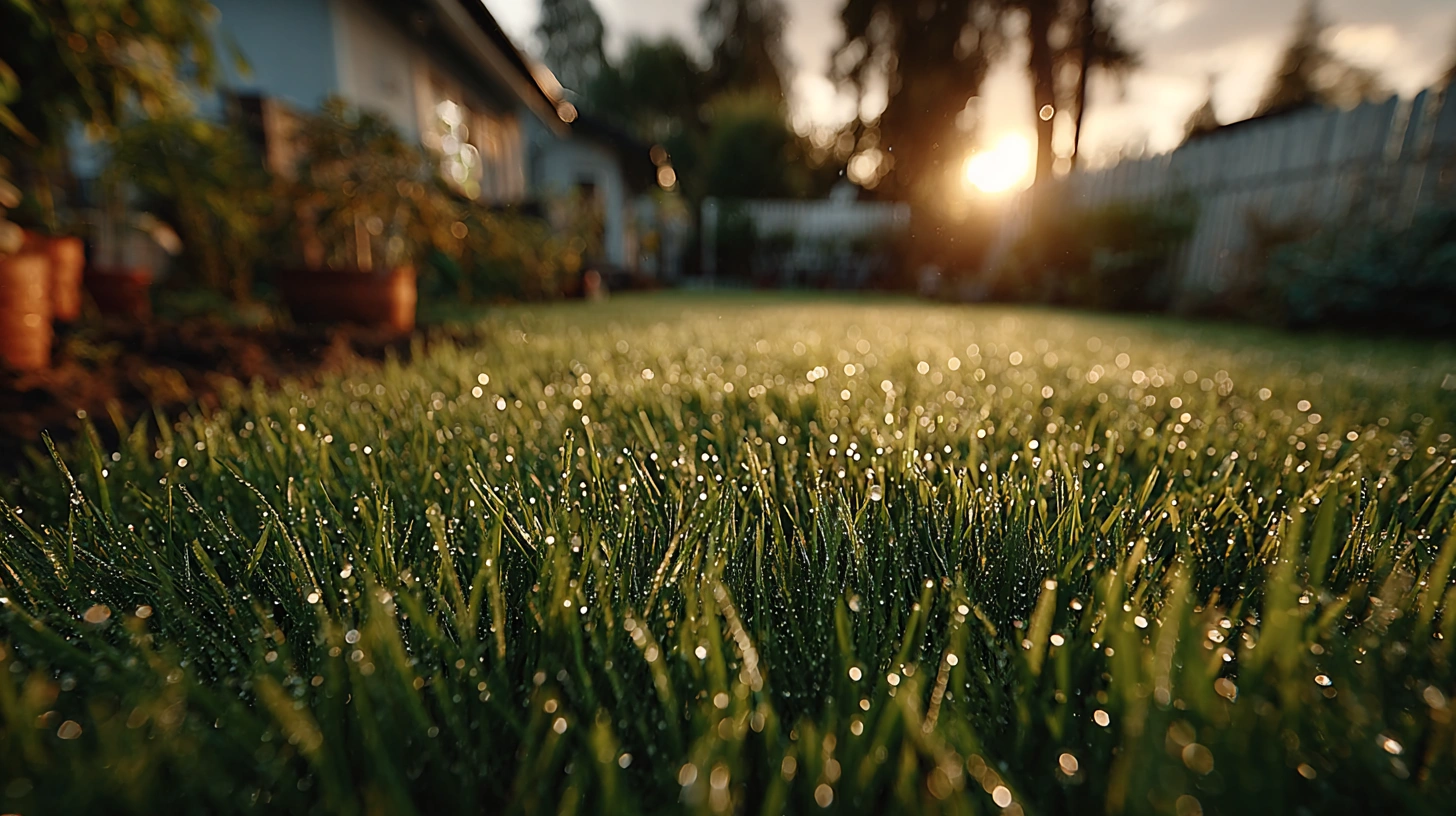Create a Touchably Soft Lawn: Cool-Season Grass Secrets

Discover how to achieve a lush, green lawn so inviting that passersby can't resist touching it. Expert tips for cool-season grass care.
Create a Touchably Soft Lawn: Cool-Season Grass Secrets
Introduction
Ever walked past a lawn so lush and inviting that you couldn't resist running your fingers through it? That's the hallmark of a well-maintained cool-season grass lawn. If you're aiming for a turf that turns heads and tempts touch in the Mountain West or Northern US and Canada, you're in the right place. Let's dive into the secrets of creating a lawn so irresistible, it might just become the talk of the neighborhood.
The Cool-Season All-Stars: Choosing Your Grass
Kentucky Bluegrass: The Touchable Favorite
When it comes to cool-season grasses that beg to be touched, Kentucky bluegrass (Poa pratensis) takes the crown. Here's why it's the go-to choice for a lawn that feels as good as it looks:
Density: Thanks to its rhizomes (underground stems), Kentucky bluegrass creates a thick, carpet-like surface that's soft underfoot.
Color: It boasts a deep, rich green that screams "healthy lawn" from blocks away.
Texture: The fine blades contribute to that irresistibly soft feel.
Tall Fescue: The Tough Guy with a Soft Side
Don't let the name fool you. Modern tall fescue varieties (Festuca arundinacea) have come a long way:
Durability: It stands up well to foot traffic, making it ideal for active yards.
Drought Tolerance: Tall fescue keeps its cool (and color) when the heat is on.
Texture: While not quite as fine as bluegrass, newer cultivars are much softer than their ancestors.
Perennial Ryegrass: The Quick-Change Artist
Perennial ryegrass (Lolium perenne) isn't just a pretty face:
Fast Establishment: It's the sprinter of the lawn world, perfect for quick repairs.
Wear Resistance: It bounces back quickly from heavy use.
Appearance: Its bright green color and fine texture contribute to that "wow" factor.
Ready to transform your lawn?
Get personalized AI guidance for the perfect lawn. Download Grassmaster Gus now!
The Secret Sauce: Nurturing Your Lawn to Touchable Perfection
Feed It Right: The Key to Lush Growth
Think of fertilizer as your lawn's multivitamin. Here's how to get it right:
Timing is Everything: Focus on spring and fall applications when growth is most active.
The Magic Number: Aim for 2-4 pounds of nitrogen per 1,000 square feet annually.
Don't Overdo It: More isn't always better. Excess fertilizer can lead to weak growth and environmental issues.
Mow Like a Pro: The Right Cut for the Right Look
Proper mowing is like a good haircut for your lawn. Here's how to nail it:
Height Matters: Keep cool-season grasses between 2.5 to 3.5 inches tall.
The One-Third Rule: Never remove more than one-third of the blade length in a single mowing.
Sharp Blades: Dull mower blades tear grass, leading to brown tips and potential disease entry points.
Water Wisely: Deep and Infrequent Wins the Race
When it comes to watering, think quality over quantity:
Go Deep: Aim for 1 to 1.5 inches of water per week, encouraging deep root growth.
Timing is Key: Water early in the morning to reduce evaporation and disease risk.
Watch the Weather: Adjust your watering schedule based on rainfall and temperature.
Troubleshooting: When Your Lawn Loses Its Luster
Problem: Patchy or Thin Areas
Solution: Overseeding is your friend, but choose wisely:
Use a mix compatible with your existing lawn.
Avoid annual ryegrass temptation - it's a short-term fix that dies out.
Best time to overseed? Late summer to early fall for most regions.
Problem: Rough or Coarse Texture
Solution: This often comes down to species selection and maintenance:
If you've got older, coarser tall fescue, consider overseeding with newer, finer varieties.
Ensure you're not mowing too short, which can make grass feel stubbly.
Regular, deep watering encourages softer growth.
Problem: Dull Color
Solution: A few factors could be at play:
Check your soil pH - aim for 6.0 to 7.0 for optimal nutrient uptake.
Ensure you're not under-fertilizing, especially in key growth periods.
Look out for signs of drought stress or disease, which can affect color.
Regional Wisdom: Tailoring Your Approach
In the Mountain West and Northern US/Canada, cool-season grasses are the natural choice. But local conditions can vary:
Mountain West: You might lean towards more drought-tolerant varieties like tall fescue in drier areas.
Northern US/Canada: Kentucky bluegrass often reigns supreme here, thriving in the cooler climate.
Always Check Local Regs: Some areas have restrictions on fertilizer use or watering schedules. Your local extension office is a goldmine of region-specific advice.
Conclusion: Your Path to Lawn Envy
Creating a lawn so lush and inviting that people can't help but touch it isn't just about bragging rights (though those are nice). It's about crafting an outdoor space that enhances your home and brings you joy every time you step outside.
Remember, the key ingredients are:
Choosing the right grass for your region and needs
Feeding your lawn properly
Mowing with precision
Watering deeply but infrequently
Addressing issues promptly
With a little patience and the right know-how, you'll be well on your way to having the most touchable turf on the block. So roll up your sleeves, grab your gardening gloves, and get ready to create a lawn that's not just seen, but experienced.
Happy lawn tending, folks. May your grass always be greener – and softer – on your side of the fence.


